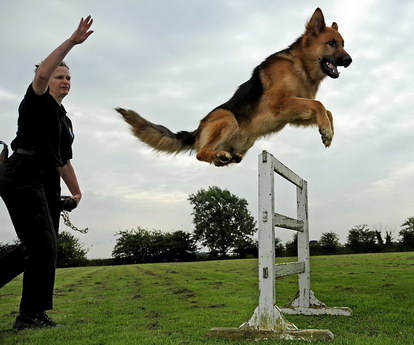Introduction:
Training your pet is an essential aspect of responsible pet ownership, ensuring a harmonious and well-behaved companion. In Dubai, where pets are cherished members of many households, it becomes crucial to establish proper training routines to create a safe and enjoyable environment for both pets and their owners. In this blog post, we will explore various case studies and effective techniques for training pets in Dubai, focusing on dogs and cats. We will cover topics such as pet behavior, obedience, socialization, discipline, and specific training methods like positive reinforcement, crate training, and more.

Positive Reinforcement for Pet Training:
Case Study: Sarah and Max (Dog Training)
Sarah, a Dubai resident, struggled with training her energetic Labrador Retriever named Max. She decided to employ positive reinforcement techniques to shape Max’s behavior. By using treats, praise, and rewards, Sarah successfully taught Max basic commands such as sit, stay, and come. With consistent practice and positive reinforcement, Max became a well-mannered and obedient companion.
Key Takeaways:
Positive reinforcement involves rewarding desired behavior to encourage its repetition.
Treats, praise, and rewards can be effective tools in pet training.
Consistency and repetition are key to reinforcing positive behavior.
Crate Training for Pet Comfort and Safety:
Case Study: Ahmed and Bella (Dog Training)
Ahmed, a resident of Dubai, struggled with Bella, his German Shepherd’s separation anxiety and destructive behavior. Seeking a solution, Ahmed introduced crate training to Bella’s routine. Gradually acclimating Bella to her crate, using positive reinforcement and creating a safe and comfortable space, helped her feel secure when left alone. Eventually, Bella’s anxiety reduced, and her destructive behavior ceased.
Key Takeaways:
Crate training can alleviate separation anxiety and destructive behavior.
Introduce the crate gradually, using positive reinforcement and creating a comfortable environment.
Ensure the crate is appropriately sized and provides a safe retreat for your pet.
Socialization and Obedience Training for Pet Behavior:
Case Study: Maria and Whiskers (Cat Training)
Maria, a cat owner in Dubai, faced challenges with her new kitten, Whiskers, displaying aggressive behavior towards visitors. Maria implemented a socialization and obedience training plan, which involved exposing Whiskers to various people and rewarding calm behavior. Through consistent training and positive reinforcement, Whiskers learned to associate visitors with positive experiences, resulting in improved behavior.
Key Takeaways:
Early socialization is crucial for cats to adapt to different environments and people.
Gradual exposure to new stimuli, rewarding calm behavior, and providing safe spaces can help modify aggressive behavior.
Consistency and patience are essential when training cats.
Professional Training for Advanced Commands and Manners:
Case Study: Mark and Luna (Dog Training)
Mark, a Dubai resident, sought professional dog training services for his lively Golden Retriever, Luna. The training program included advanced commands, leash training, and off-leash recall. The professional trainer used positive reinforcement techniques to reinforce desired behaviors. Over time, Luna developed exemplary manners and improved her obedience, making her a well-behaved companion both at home and in public.
Key Takeaways:
Professional trainers can offer specialized training programs tailored to individual pet needs.
Advanced commands, leash training, and off-leash recall enhance pet safety and control.
Positive reinforcement remains a valuable tool for professional training programs.
It is important to be patient, consistent, and adapt training techniques to suit your pet’s personality and needs. By investing time and effort into training, you can ensure a well-behaved, happy, and balanced pet.
Additional Techniques for Pet Training:
Potty Training: Whether you have a dog or a cat, potty training is a fundamental aspect of pet training. Establish a routine, use positive reinforcement when your pet eliminates in the appropriate place, and be patient during the learning process. Consistency is key to successful potty training.
Leash Training: Walking on a leash is essential for the safety of your pet and others. Introduce your pet to a leash gradually, using positive reinforcement and rewards to encourage walking beside you without pulling. Regular practice and exposure to different environments will help your pet become comfortable on a leash.
Recall Training: Teaching your pet to come when called is crucial for their safety and control. Start in a quiet environment, use treats or toys as rewards, and gradually increase the level of distractions. Consistently reinforce the recall command, making it a positive experience for your pet.
Basic and Advanced Commands: Teaching your pet basic commands like “sit,” “stay,” “lie down,” and “heel” establishes a foundation for good manners and control. Once your pet has mastered the basics, you can progress to more advanced commands, such as “fetch,” “roll over,” or even tricks like “play dead.” Remember to use positive reinforcement to motivate and reward your pet.
In-Home Training vs. Group Training: Consider your pet’s individual needs when deciding on the training approach. In-home training provides personalized attention and addresses specific behavior issues, while group training offers socialization opportunities. Some pets may benefit from a combination of both approaches.
Conclusion:
Training your pet in Dubai is a journey that requires time, dedication, and the use of effective techniques. By implementing positive reinforcement, crate training, socialization, and professional training services, you can help your pet develop good behavior, obedience, and manners. Remember to tailor the training methods to suit your pet’s unique needs and personality.
Investing in pet training not only enhances your pet’s well-being and safety but also strengthens the bond between you and your furry friend. Enjoy the process, be patient, and celebrate the progress your pet makes along the way. With consistent training and a loving approach, your pet will grow into a well-trained and happy companion that brings joy to your life in Dubai.

